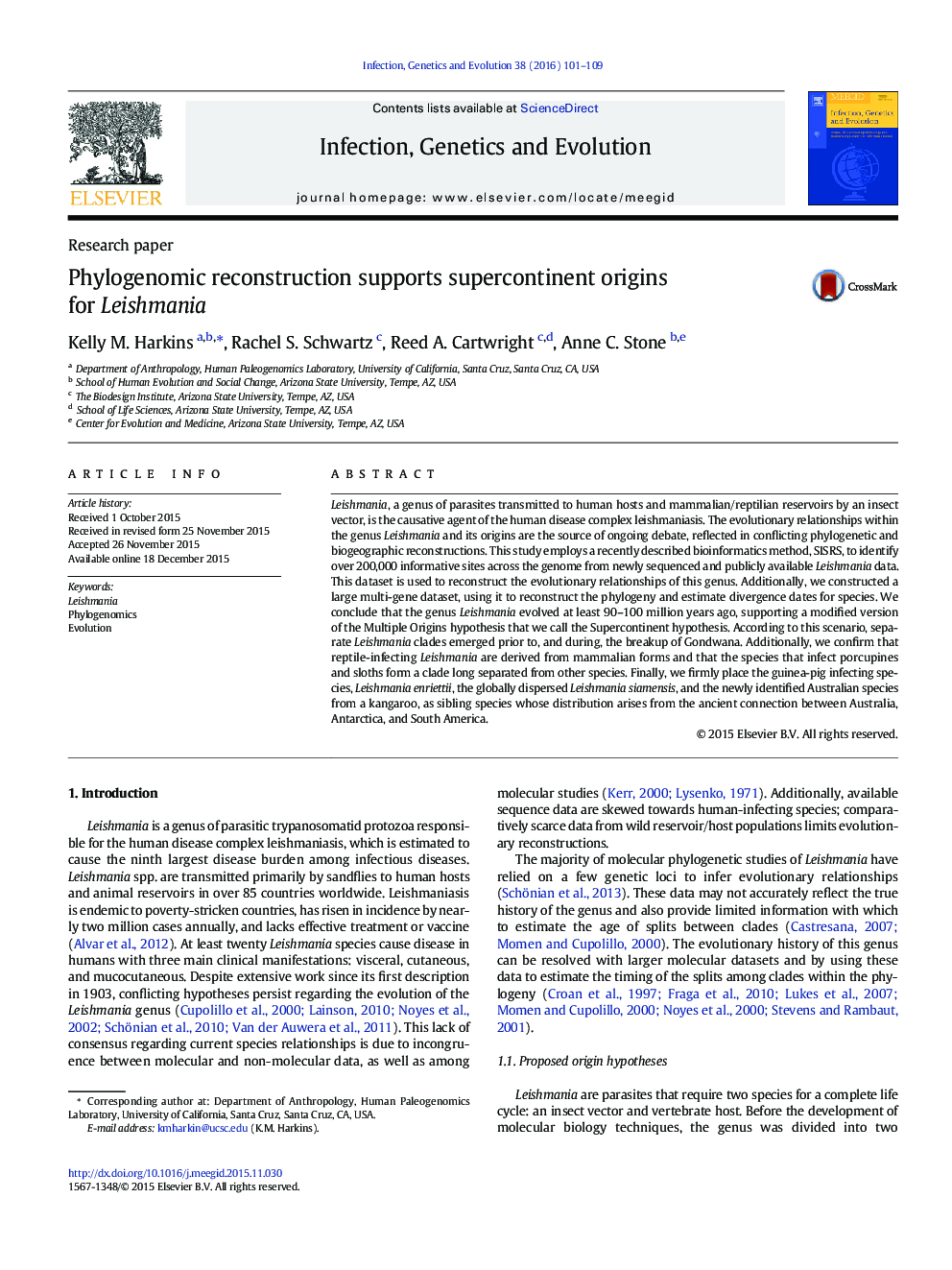| کد مقاله | کد نشریه | سال انتشار | مقاله انگلیسی | نسخه تمام متن |
|---|---|---|---|---|
| 5908481 | 1570165 | 2016 | 9 صفحه PDF | دانلود رایگان |
- Identified over 200,000 sites across 23 Leishmania genomes for phylogenomics
- The position of the kangaroo isolate provides evidence for southern supercontinent origin
- Biogeography and divergence dates consistent with ancient dispersal of the genus
Leishmania, a genus of parasites transmitted to human hosts and mammalian/reptilian reservoirs by an insect vector, is the causative agent of the human disease complex leishmaniasis. The evolutionary relationships within the genus Leishmania and its origins are the source of ongoing debate, reflected in conflicting phylogenetic and biogeographic reconstructions. This study employs a recently described bioinformatics method, SISRS, to identify over 200,000 informative sites across the genome from newly sequenced and publicly available Leishmania data. This dataset is used to reconstruct the evolutionary relationships of this genus. Additionally, we constructed a large multi-gene dataset, using it to reconstruct the phylogeny and estimate divergence dates for species. We conclude that the genus Leishmania evolved at least 90-100 million years ago, supporting a modified version of the Multiple Origins hypothesis that we call the Supercontinent hypothesis. According to this scenario, separate Leishmania clades emerged prior to, and during, the breakup of Gondwana. Additionally, we confirm that reptile-infecting Leishmania are derived from mammalian forms and that the species that infect porcupines and sloths form a clade long separated from other species. Finally, we firmly place the guinea-pig infecting species, Leishmania enriettii, the globally dispersed Leishmania siamensis, and the newly identified Australian species from a kangaroo, as sibling species whose distribution arises from the ancient connection between Australia, Antarctica, and South America.
Journal: Infection, Genetics and Evolution - Volume 38, March 2016, Pages 101-109
